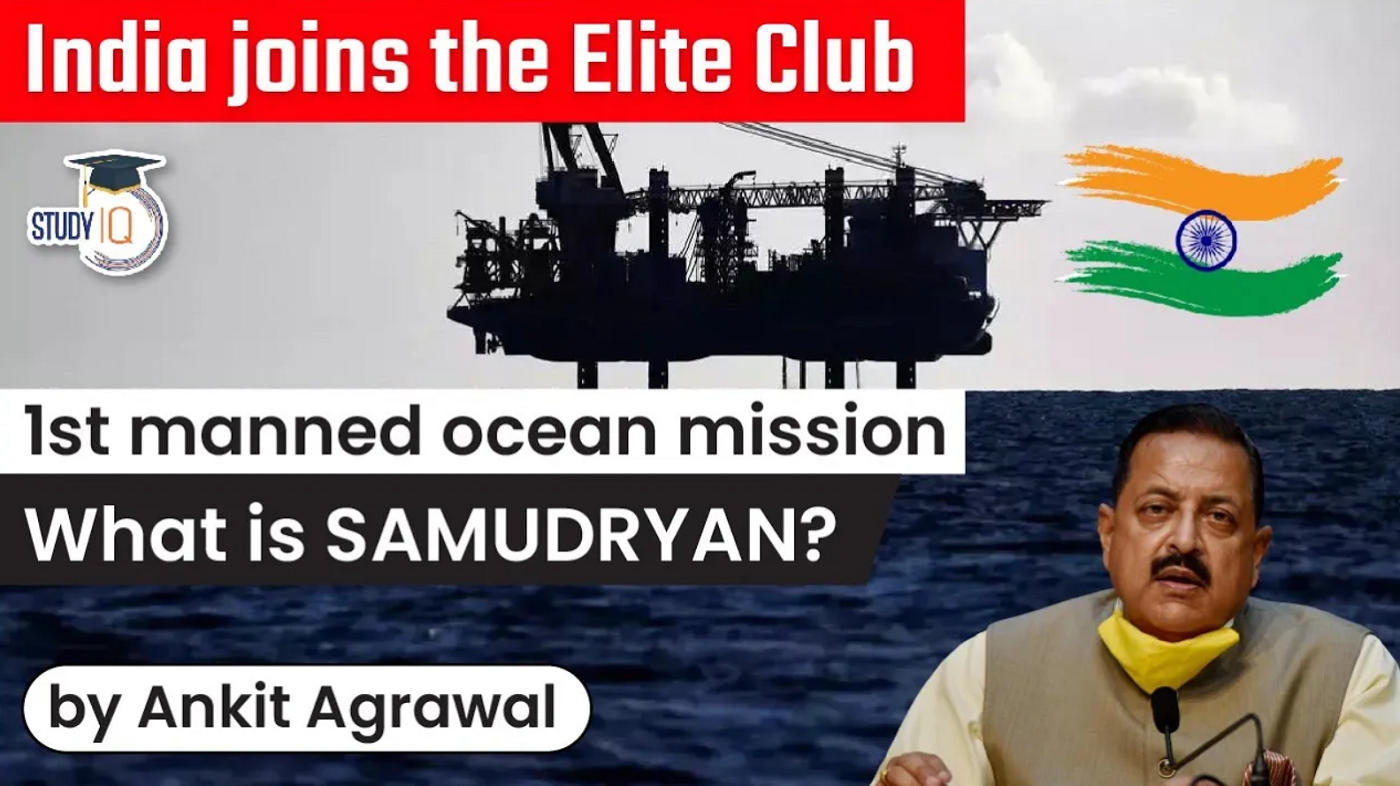Table of Contents
What has happened?
- India’s first manned ocean mission ‘Samudrayan’ was launched at NIOT, Chennai by Union Minister Jitendra Singh and
- With this the nation joined an elite club of nations having such underwater vehicles for carrying out subsea activities.
- He said India has made huge progress in science and technology and when an Indian goes up into space as part of the Gaganyaan programme, another would dive deep into the ocean.
Why this mission?
- India has been allotted a site of 75,000 square kilometres in the Central Indian Ocean Basin (CIOB),
- By the UN International Sea Bed Authority for exploitation of polymetallic nodules (PMN).
- These are rocks scattered on the seabed containing iron, manganese, nickel and cobalt.
significance
- Being able to lay hands on a fraction of that reserve can meet the energy requirement of India for the next 100 years, say officials at the Earth Sciences Ministry.
- It has been estimated that 380 million metric tonnes of polymetallic nodules are available at the bottom of the seas in the Central Indian Ocean.
- In the works since 2018, the mission is expected to cost ₹4,077 crore over the next five years.
- The estimated cost for the first phase of three years (2021-2024) would be ₹2,823.4 crore.
- The Ministry of Earth Sciences (MoES) will be the nodal Ministry implementing this multi-institutional mission.
6 components of the mission
- There are six components to the programme.
- A manned submersible will be developed to carry three people to a depth of 6,000 metres in the ocean with a suite of scientific sensors and tools.
- An Integrated Mining System will be also developed for mining polymetallic nodules at those depths in the central Indian Ocean.

- The Matsya 6000, the deep-sea vehicle under the Samudrayan initiative, is designed to carry three people in a titanium alloy personnel sphere of 2.1-metre diameter enclosed space.
- It will have an endurance of 12 hours and an additional 96 hours in case of an emergency situation.
- The second component involves developing Ocean Climate Change Advisory Services,
- Which entails developing a suite of observations and models to understand and provide future projections of important climate variables on seasonal to decadal time scales.
- The next component is searching for deep sea flora and fauna, including microbes, and studying ways to sustainably utilise them.
- The fourth component is to explore and identify potential sources of hydrothermal minerals that are sources of precious metals formed from the earth’s crust along the Indian Ocean mid-oceanic ridges.
- The fifth component involves studying and preparing detailed engineering design for offshore Ocean Thermal Energy Conversion (OTEC) powered desalination plants.
- The final component is aimed at grooming experts in the field of ocean biology and engineering.
- This component aims to translate research into industrial applications and product development through on-site business incubator facilities.
Q) Which of the following statements about International Seabed Authority is correct?
- It is headquartered at New York.
- India is a member of International Seabed Authority.
- 1 only
- 2 only
- Both 1 & 2
- None of the above
Latest Burning Issues | Free PDF


























 WhatsApp
WhatsApp